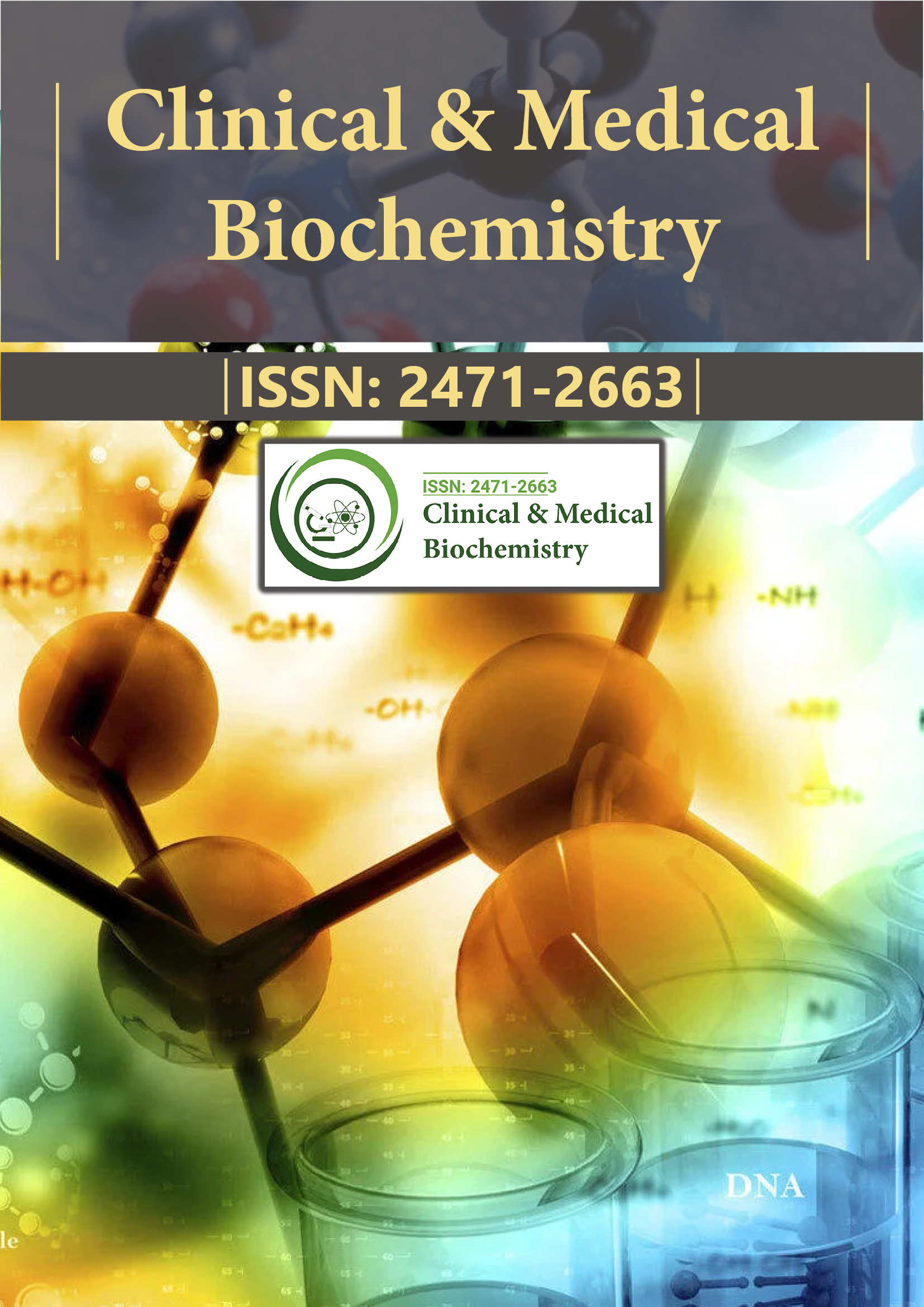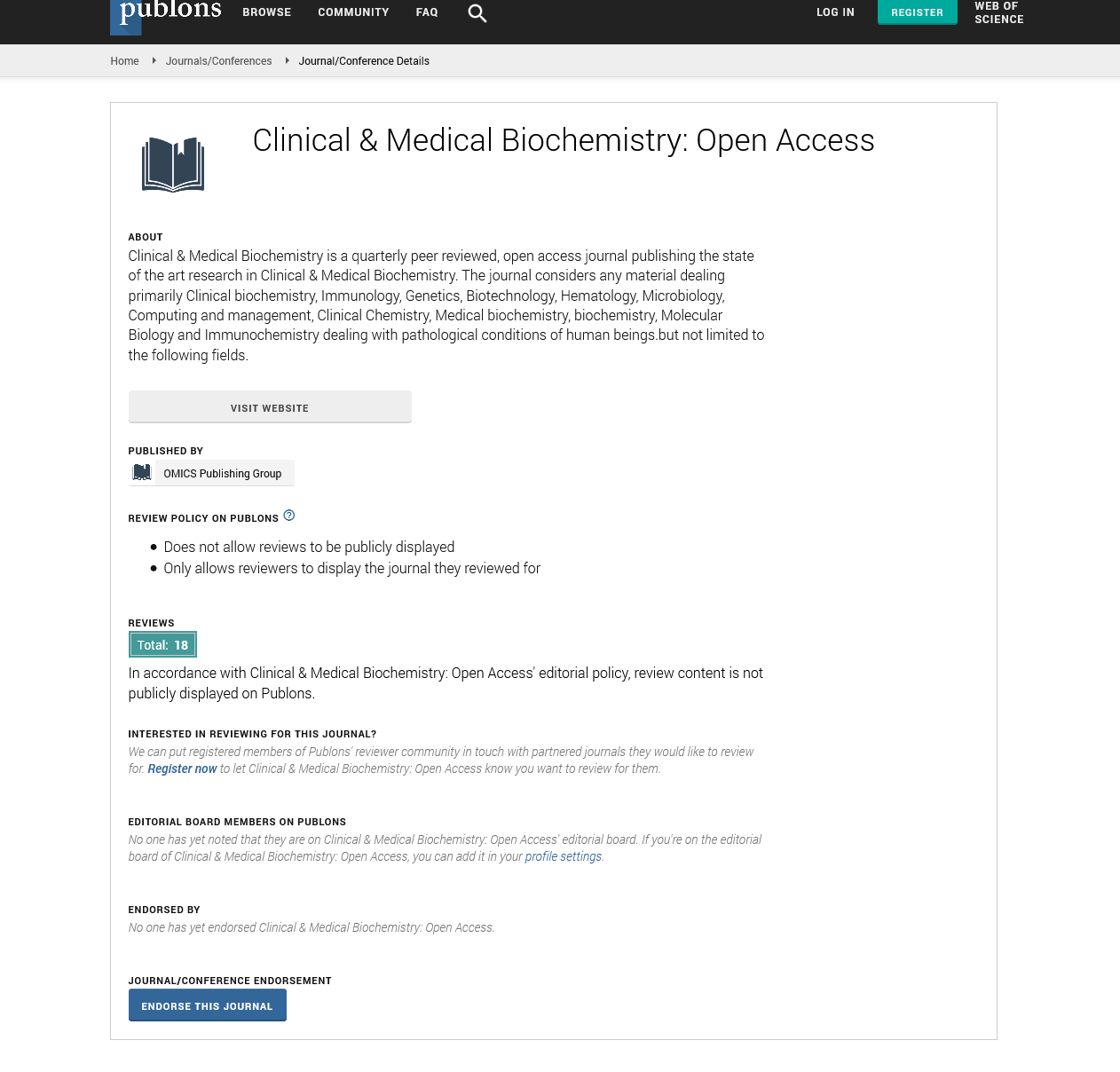Indexed In
- RefSeek
- Directory of Research Journal Indexing (DRJI)
- Hamdard University
- EBSCO A-Z
- OCLC- WorldCat
- Scholarsteer
- Publons
- Euro Pub
- Google Scholar
Useful Links
Share This Page
Journal Flyer

Open Access Journals
- Agri and Aquaculture
- Biochemistry
- Bioinformatics & Systems Biology
- Business & Management
- Chemistry
- Clinical Sciences
- Engineering
- Food & Nutrition
- General Science
- Genetics & Molecular Biology
- Immunology & Microbiology
- Medical Sciences
- Neuroscience & Psychology
- Nursing & Health Care
- Pharmaceutical Sciences
Opinion - (2023) Volume 9, Issue 2
Intestinal Epithelial Cells a Critical Player in the Mucosal Barriers and the Role of Zinc in Gastrointestinal Diseases
Kevin Gourdine*Received: 03-Mar-2023, Manuscript No. CMBO-23-20948; Editor assigned: 06-Mar-2023, Pre QC No. CMBO-23-20948 (PQ); Reviewed: 20-Mar-2023, QC No. CMBO-23-20948; Revised: 27-Mar-2023, Manuscript No. CMBO-23-20948 (R); Published: 03-Apr-2023, DOI: 10.35841/2471-2663.23.9.161
Description
The small intestine is made up of crypts that pierce the mucosa and villi that stick out into the lumen. The big intestines, on the other hand, only have crypts that enable water absorption and no projecting villi. A monolayer of intestinal epithelial cells covers the surface of the intestinal mucosa. Absorptive enterocytes, goblet cells that produce mucin, and Paneth cells, which emit antimicrobial substances and serve as a niche for intestinal stem cells, are examples of differentiated epithelial cells. The surface of the digestive tract is covered in intestinal epithelial cells. To keep the mucosal barriers' structural integrity and safeguard the host from luminal antigens and pathogens, the cells are crucial. Intestinal epithelial cells continuously and quickly replace themselves, maintaining the mucosal barriers. Gastrointestinal disorders such diarrhea and inflammatory bowel diseases are linked to defects in the self-renewal of these cells. Living things require the trace element zinc, and a zinc deficit is intimately associated with compromised mucosal integrity. Intestinal stem cells are the source of all intestine epithelial linages. Leucine-rich repeat-containing G-proteincoupled receptor 5 (Lgr5) is a marker protein for intestinal stem cells that constantly self-renew and give rise to daughter cells known as Transit-Amplifying (TA) cells.
TA cells proliferate vigorously to increase their population before differentiating into distinct epithelial lineages. When they differentiate, the majority of differentiated epithelial cells move from the crypts to the tips of the villi. Apoptosis occurs in intestinal epithelial cells when they approach the villi's tips. Intestinal stem cell density is dynamically controlled. The stem cells actively self-renew during tissue development or repair, which helps to enhance tissue size or repair. At the crypt base, Paneth cells are scattered among Crypt Base Columnar (CBC) cells, which express Lgr5. The canonical Wingless-Int (Wnt) signalling pathway's target gene is Lgr5, which acts as the receptor and facilitates R-spondin signalling, hence amplifying Wnt signalling. The Lgr5+ CBC cells are examples of stem cells that are actively cycling and divide every 24 hours. A stem cell population is also represented by the cells that are found in the crypts at the +4 location directly above the Paneth cells. The +4 cells exhibit sluggish cycling and DNA label-retention traits of dormant stem cells and express Hopx predominately. In fact, when Hopx+ quiescent stem cells lose Lgr5+ stem cells, this causes them to actively self-renew, making up for the loss of Lgr5+ stem cells. Moreover, when one cell type is lacking, Hopx+ dormant stem cells and Lgr5+ active cells can balance one another out. By secreting O-glycosylated mucin proteins, goblet cells are a secretory lineage that play a significant role in the development of the mucus layer. The physicochemical barrier that is provided by the mucus gel layers on the gut surface hinders the invasion of microorganisms. The inner layer includes antibiotic chemicals.
Immunoglobulin A (IgA), which is made by B cells in the lamina propria, is also present in the mucus layer. Invading pathogens are neutralised, antigen is presented to microfold cells (M cells) on the follicular-associated epithelium surface, and the adhesion of microorganisms to the epithelial surface is disrupted by secreted IgA in the lumen. The mucus layer has a barrier function in addition to providing nutrients for gut microorganisms. The inner layer of polymerized MUC2 is proteolytically broken down to create the outer layer, which is inhabited by bacteria. Intestinal microorganisms can use the highly glycosylated mucus layer as an energy source when dietary fibre levels are low. This causes the mucus barrier to erode, which causes intestinal inflammation, indicating that the nutritional condition may affect the mucus barrier's tensile strength. Functions of the physical barrier are regulated by pathogen-associated molecular pattern signalling. By maintaining the expression of Zonula Occludins-1 (ZO-1), a crucial element of the tight junction in the intestinal epithelial cells, TLR2 signalling can improve intestinal integrity. The inflammasome family of receptors includes the NOD-like receptor family. Adenosine Triphosphate (ATP), DNA, and RNA are among the substances that damaged cells produce in the intestines. These released chemicals serve as alarm signals that cause inflammasomes to become active. Zinc is an essential trace element in all living species, including mammals, microbes, and plants.
Zinc-binding proteins are thought to be encoded by 10% of the human genome. As a result, a significant fraction of the proteome is made up of zinc-binding proteins. These zincbinding proteins have a wide range of functions. The aetiology of digestive illnesses is linked to dysregulation of zinc homeostasis. Diarrhea is brought on by a zinc deficit. Patients with chronic diarrhoea have been discovered to have lower zinc levels in their serum or in their colon mucosa. Diarrhea can be prevented or treated with zinc supplementation. Zinc deficiency can also raise the risk of gastrointestinal infectious illnesses. The tissue zinc level in the inflamed gut was altered in pathogenic bacterial infections. Patients with shigellosis have been documented to have aberrant mucus and transmucosal protein loss as well as malabsorption of nitrogen. Improvements in the intestinal barrier, intestinal permeability, nitrogen absorption, symptoms, and immunological responses are all carried about by zinc supplementation. Serum zinc levels in CD patients are lower than those in healthy people. When compared to healthy controls, zinc absorption is also reduced in IBD patients. Although there is considerable debate regarding the link between low serum zinc levels and the development of CD, zinc supplementation seems to improve disease outcomes. In the plasma membrane, the particular zinc receptor GPR39 is expressed. GPR39 stimulates downstream signal pathways in response to extracellular zinc to control cellular processes like proliferation, differentiation, and survival. The degree of colitis appears to be influenced by GPR39's detection of extracellular zinc.
Citation: Gourdine K (2023) Intestinal Epithelial Cells a Critical Player in the Mucosal Barriers and The Role of Zinc in Gastrointestinal Diseases. Clin Med Bio Chem. 9:161.
Copyright: © 2023 Gourdine K. This is an open-access article distributed under the terms of the Creative Commons Attribution License, which permits unrestricted use, distribution, and reproduction in any medium, provided the original author and source are credited.

